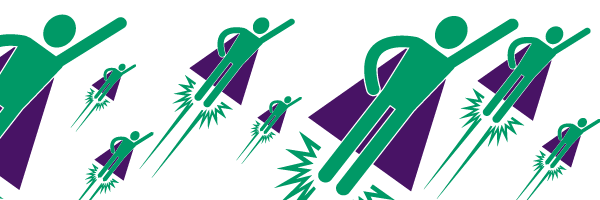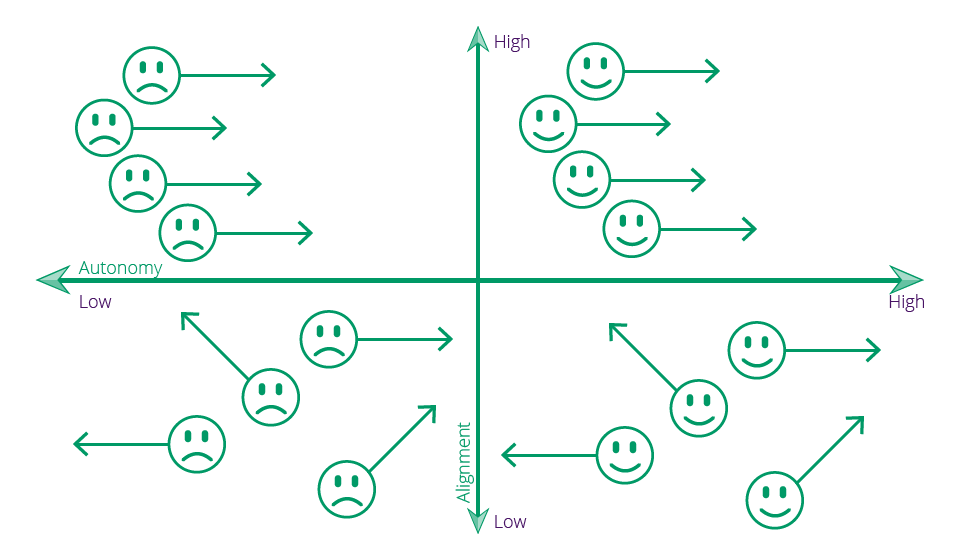Empowering the Agilist
By Team Arrk |
|
4 mins read |

The core elements of being Agile are the spirit of ongoing collaboration, self-management and empowerment of the team to achieve product development goals. The same can be derived from the lean philosophy of software development i.e. one of its seven principles (i.e. Empower the team) strongly advocates empowering the people within the team.
Studies show that putting people in low power roles, often hampers their cognitive abilities by a significant measure and thus their ability to experiment and get ahead. Unfortunately traditional management structures often leave little room for teams to be empowered to take decisions.
So how does empowerment really work? Let’s explore this from a viewpoint of what works in an agile environment for empowered teams.
What are the signs of an empowered team?
- Collaboration and mutual knowledge gain is encouraged within the team and becomes the norm over time
- The team performs with independence, taking decisions that achieve the team goals. Any team member feels inclined and can challenge and deviate from set-norms
- Teams do not fear failure and take each failure and success as its own responsibility. Failure especially becomes a means to become better (and not a witch-hunt).
- Risk is pragmatically viewed as a challenge to be adapted to and potentially overcome to suit changing market needs, customer context and so on.
- Such a team empathizes with an end user of the product with emphasis on usability and quality
- They have great communication skills and operate with a high trust level with both external and internal stakeholders.
- The team follows a pull mechanism to perform and deliver passionately rather than have work handed out or assigned to them.
Some important influences contributing to the empowerment of an agile team are customer involvement, organizational culture and core values, value given to ownership of work, team dynamics, software development model followed, etc.
The right mix of autonomy and alignment
Dilemmas faced by more traditional managers while trying to create such empowered teams are often because they tend to perceive empowerment as akin to a loss of control or power, or perhaps even anarchy. Two factors really dictate which end of the Alignment – Autonomy spectrum you gravitate to as a delivery team.
Simply put alignment depicts a common goal that everyone works towards and autonomy is freedom to choose a path for the same.
Which of the quadrants do you as a team lie under?

| Autonomy | Alignment | Description |
|---|---|---|
| High | High | This quadrant is where empowerment really works for teams. |
| High | Low | The justified fear of management is the chaos prevailing in this quadrant |
| Low | High | This may work for organisations that don't need to adapt to change. However, low autonomy does stifle innovation and creativity |
| Low | Low | This is the quadrant you don't want to be! It is characterised as neither having a purpose nor any process adoption |
It was mentioned earlier that empowerment can be perceived by the more traditional manager as Anarchy (meaning lawlessness). Let’s try focus on what separates empowerment and anarchy from an agile team perspective.
| Empowerment | Anarchy (with team mutterings) |
|---|---|
| Team owns the delivery of an integrated, high quality vertical slice | “Change the features in the backlog because we don’t appreciate what’s there”. |
| Creating, owning and managing the Iteration Backlog – with a constant view of working toward the iteration goals | “Change the order of the Backlog because the high priority items are not interesting" |
| The team own and adapt their work-processes. This includes, but isn’t limited to, setting up their own meetings, rules of conduct, social norms, etc. | “No help is needed from managers, other teams or other colleagues outside the team because we are empowered not to be interrupted” (dealing with fixed mindset) |
| Being able to create and own their architecture (this may be limited to architecture of a particular section for large-scale development) | “I don’t own any area of the technical architecture as the ‘team’ does this now. I don’t need to take into account any architecture changes while developing my specific piece” |
| Passionate and own their technical practices – be able to practice paired programming or testing, Test-Driven Development, Continuous Integration, Refactoring, etc. without Product Owners or Managers advice. | “We have no time to resolve
the debt which we have to incur because
there’s always a mad rush to deliver
functionality”. The team needs to be reminded of the importance of not incurring technical debt, refactoring, following quality practices, collaborative approach to delivery amongst many other things. |
Empowerment can be gauged or monitored continuously in a team by observing the performance of the agile life cycle. Agile ceremonies are a great place to start empowering the team. It may often involve correcting team dynamics, inspiring individuals and creating fail-free environments for a stellar product delivery!
Revitalising Agile ceremonies
A team which sees itself as self-driven, collaborative and results-oriented will ensure that the ceremonies achieve ‘new’ meaning and deliver the required value.
- Look-ahead meetings | Empowered teams will quite often put forth interesting suggestions and help story development without bias. Product owners keep in mind the system limitations prevailing while trying to achieve a viable product feature. This is extremely essential as teams then will not tend to ‘hide’ technical debt to avoid barbs like ‘wasn’t that your lookout?’
- Sprint planning meeting | The empowered team commits to stories purposefully and with a sense of ownership. Such teams will not stall work for petty issues or confirmations and are often willing to experiment with minimal information and fill the gaps continuously with regular communication. Hero worship is negligible and seniors in the team are asked for ‘perspectives’ and not ‘direction’. Signs that the teams typically leave decisions to only seniors for a fear of backlash later seriously undermines core agile and lean values as most of the benefits of these principles are hard to reap without team empowerment.
- Daily Stand-ups | Empowered teams are transparent and crisp when it comes to this much haloed sprint ceremony. Such meetings are rarely enforced and the teams understand the value of starting the day with sharing information. Teams with low autonomy will often complain about the colossal waste of time of such sessions and feel pressured to talk for the fear of being judged.
- Sprint Demo | Mature teams fully comprehend the value that their work delivers. They are self organizing to an extent that everyone just falls into place and have sufficient inputs to effectively demonstrate features to stakeholders. Situations in demonstrations with teams not empowered can range from mildly annoying to catastrophic. Such teams will more than often need a command control.
- Retrospectives/Defect Analysis | Empowered teams relish the opportunity to take a step back and retrospect on how gaps in delivery can be plugged and if any communication failures exist. All of this becomes easier with high levels trust within the team and enough bases for support of such practices organization wide.
An empowered team invariably will achieve more than one which is used to follow rote orders and progress matters as is the case in a traditional setup. This team may trip over hurdles and fail at times but will learn to deliver better the next time around. Because an empowered team in today’s complex dynamic world is growth-oriented which wants to experiment often, fail early, eliminate waste, and collaborate to achieve success.








